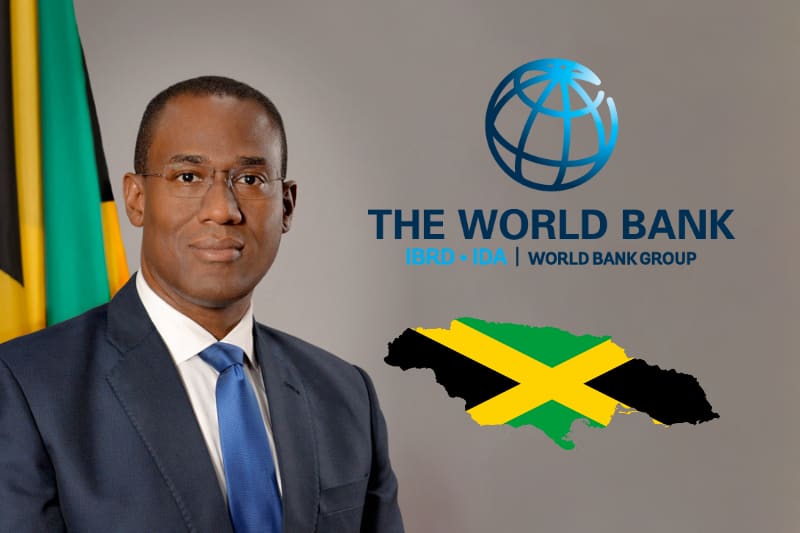Jamaica Minister of Finance highlights risk transfer as hurricane Beryl approaches

With major hurricane Beryl churning across the Caribbean towards Jamaica, the country’s Minister of Finance Dr. Nigel Clarke has highlighted the importance of robust disaster risk financing and responsive parametric risk transfer arrangements that are in-place, including its World Bank catastrophe bond.
Hurricane Beryl remains a major and dangerous storm, with Category 5 winds and is forecast to track close to Jamaica. But with uncertainty in the track still, it remains unclear how impactful it could be for Jamaica.
You can read more about hurricane Beryl in our latest article on the storm from this morning, which has been updated and contains more detail on Jamaica’s catastrophe bond.
In a media release yesterday, regarding the threat posed by hurricane Beryl, Minister of Finance Clarke highlighted Jamaica’s robust, layered risk financing and parametric insurance risk transfer arrangements.
Clarke said that, thanks to this multi-layered approach to risk transfer and disaster risk financing, the Jamaican economy is fiscally and economically resilient to withstand large natural disaster events.
“We have a credit contingent claim with the Inter American Development Bank. We also have reinsurance arrangements with the Caribbean Catastrophe Risk Insurance Facility and Jamaica just completed the placement of a catastrophe bond.
“Each of these instruments differs in the severity of natural disaster that would trigger their release,” Clarke explained.
“In a worst case scenario, that credit contingent claim with the IDB would deliver in excess of $45 billion, in a worst case scenario, our catastrophe bond would deliver $23 billion.
“But those are for a worst case scenario, Category 4 or Category 5 direct hits of hurricanes,” he continued.
Those figures are in Jamaican dollars. The US $150 million IBRD CAR Jamaica 2024 catastrophe bond transaction is seen as a responsive, parametric risk transfer solution that protects the island nation in the occurrence of a really significant hurricane impact.
Previously, Clarke provided a helpful explanation about the Jamaica disaster risk financing arrangements in an interview at a multi-lateral development event earlier this year.
At that event Clarke said, “Jamaica has developed a complete multi-layered strategy to increase the capacity of the government to respond fiscally to the challenges posed by natural disaster.
“This multi-layered strategy is embedded in our National Natural Disaster Risk Financing policy, which itself draws upon principles of risk retention, risk transfer, and seeks to diversify the sources of funding in the event of a natural disaster. We don’t want to put all of our eggs in a single basket.”
Explaining the layered approach, Clarke said, “The first in that strategy has us making annual provisions in our national budget for frequently occurring low-impact events such as drought or excess rainfall.
“The next layer, we have the Natural Disaster Fund, which we capitalised a few years ago and which we periodically top-up to provide resources that are domestically located in Jamaica we can draw on in the event of a natural disaster.
The layer above that, we have a credit contingent claim with the Inter-American Development Bank that we can draw on within days of a natural disaster.
Then we have parametric insurance as a fourth layer with the Caribbean Catastrophe Risk Insurance Facility, and the fifth layer which we’re very proud of, we became the first small island country in the world to independently sponsor a catastrophe bond with the technical assistance of the World Bank.”
Going into more detail on the catastrophe bond, Clarke said that it is, “A capital market instrument that pays out in the event of a natural disaster, and it is based on observable parameters.
He added, “That multi-layered strategy gives us diverse sources of funding and provides resources in layers to help Jamaica recover from the impact of a natural disaster.
“Our policy is geared towards what I what we call the three R’s. Not only to respond, but to recover, and to rebuild. That is the approach that we have taken.”
Jamaica is an excellent example of a country embracing the need to protect itself fiscally and provide diverse capital sources that can respond and crowd in capital to help in recovery after major natural disaster events.
The World Bank catastrophe bond is a key component, designed to respond and payout relatively quickly after a particularly severe event occurs, which would be a welcome additional source of financial liquidity should hurricane Beryl sustain its intensity for longer than most models currently anticipate and come close enough to Jamaica to cause severe impacts.
The catastrophe bond’s parametric trigger provides for stepped payouts, in increments depending on how intense a hurricane is as it nears or impacts Jamaica.
Payouts can range from 30% of the $150 million of cat bond principal, to the full 100% for a particularly severe storm occurrence.
At this time it remains uncertain as to whether Jamaica’s catastrophe bond could be triggered and we will need to wait some hours more to see how the forecast develops, to really know how threatened the notes may be.
As well as the catastrophe bond, the parametric insurance provided by the CCRIF SPC is another responsive source of insurance risk transfer that could also payout and benefit Jamaica’s recovery, in the eventuality hurricane Beryl’s impacts are damaging.
Read more about hurricane Beryl in our latest article on the storm from this morning, which has been updated and contains more detail on Jamaica’s catastrophe bond.






